Introduction
Creating an environment where children can thrive socially and emotionally is crucial, especially for those on the autism spectrum. This article delves into various strategies and tools that empower parents and caregivers to enhance their children's social skills and overall well-being. From structured play and role-playing to visual supports and digital games, each section offers practical, evidence-based methods to support social communication and emotional regulation.
Discover how activities that integrate a child's unique interests can foster engagement, confidence, and a sense of belonging, paving the way for meaningful interactions and developmental progress.
Structured Play for Social Interaction
Organized play fosters a supportive atmosphere for young ones to cultivate important interpersonal skills. Activities such as board games or group sports go beyond mere entertainment; they foster turn-taking, cooperation, and interaction among peers. Dr. Hannah Schertz's research highlights the significance of early intervention facilitated by parents to enhance communication skills in youngsters with autism, stressing that joint attention is vital for their interpersonal development. In line with this, structured play enables young individuals to practice these skills in a supportive setting, ultimately promoting positive interactions. Furthermore, research indicates that play, particularly when promoted in an engaging environment, greatly improves learning results and interpersonal involvement, which are essential for overall development. As Dr. Brown points out, play nurtures self-awareness, vocabulary, and socialization, reducing stress and increasing physical activity. Participating in organized play activities can thus be a powerful tool in assisting young individuals in developing confidence and a sense of belonging.
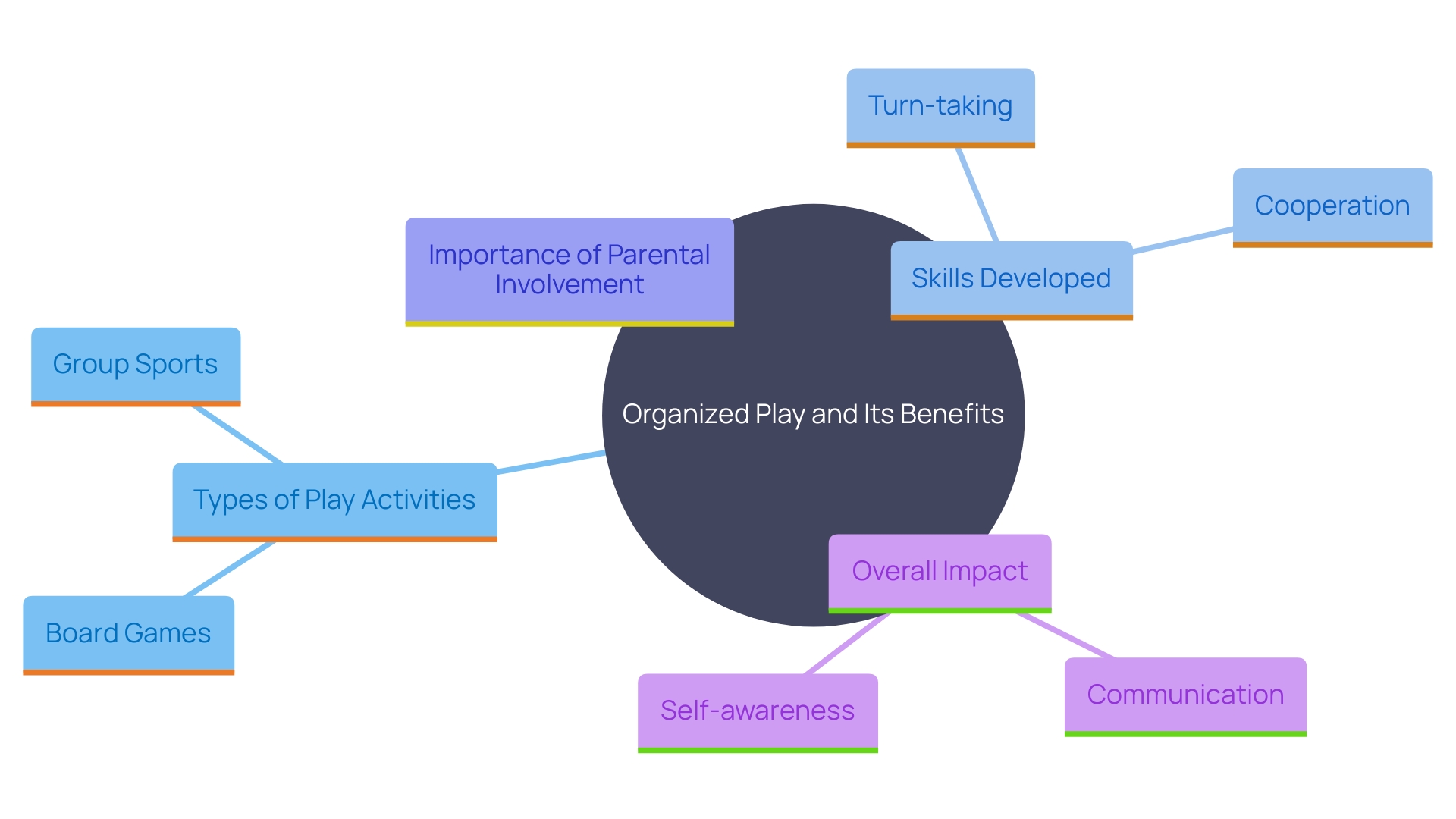
Visual Supports and Social Stories
Visual aids and personal narratives play a crucial role in assisting individuals with autism comprehend interpersonal situations more effectively. These tools make intricate interactions easier by breaking them down into manageable steps, allowing young individuals to navigate group activities and react suitably. For example, studies from the University of Geneva emphasize that autistic youth frequently concentrate more on non-interactive stimuli, such as textures or geometric shapes, instead of relational aspects like faces or interactions. This unique attentional preference highlights the significance of early interventions that improve social attention and direct autistic individuals onto developmental paths akin to their peers.
Evidence also supports that tailored behavioral interventions, such as those involving playful interactions, can significantly enhance communication skills in young individuals with autism. More than a hundred youngsters in Geneva have gained from such methods, showcasing positive results. Moreover, successful parent-offspring interactions have been linked to favorable outcomes, highlighting the necessity for parents to interact attentively with their offspring using visual materials and narrative tales.
A study involving eye-tracking devices revealed that individuals with autism do not follow the same developmental trajectory as typically developing individuals, further advocating for individualized support systems. These findings correspond with the wider comprehension that developmental interventions can enhance interpersonal interaction, promoting better involvement and emotional regulation for youth on the spectrum.
In general, incorporating visual aids and narrative techniques into everyday activities provides an organized yet adaptable method for improving interpersonal abilities and interactions for individuals on the autism spectrum, ultimately fostering a sense of inclusion and success.
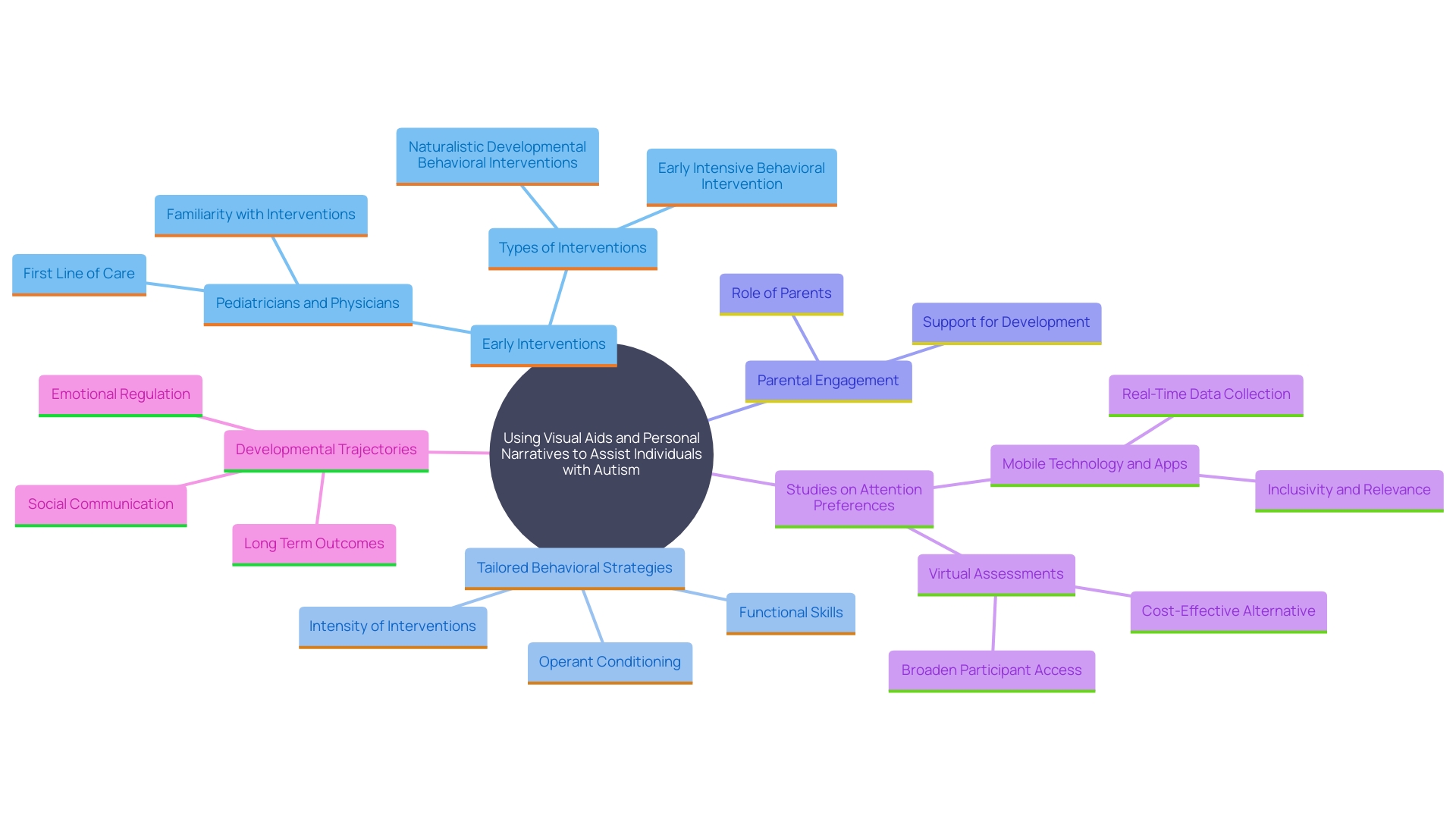
Role-Playing for Social Situations
Participating in role-playing exercises, like performing various interpersonal situations, can be extremely advantageous for youngsters on the autism spectrum. This method allows them to practice various responses in a controlled and supportive environment. By mimicking daily exchanges such as greetings or sharing, children can enhance their confidence and improve their communication abilities. A study published in the journal Autism highlighted the positive impact of role-playing games like Dungeons and Dragons on autistic individuals. Researchers from the University of Plymouth, together with colleagues from Edge Hill University and Dalarna University, discovered that such games provide a secure environment for autistic adults to participate in interactions. Over six weeks, participants played out scenarios within small groups, which significantly reduced their struggles in real-life interactions. This method not only aids in cultivating interpersonal abilities but also offers a feeling of accomplishment and community, vital for their overall development and wellness.
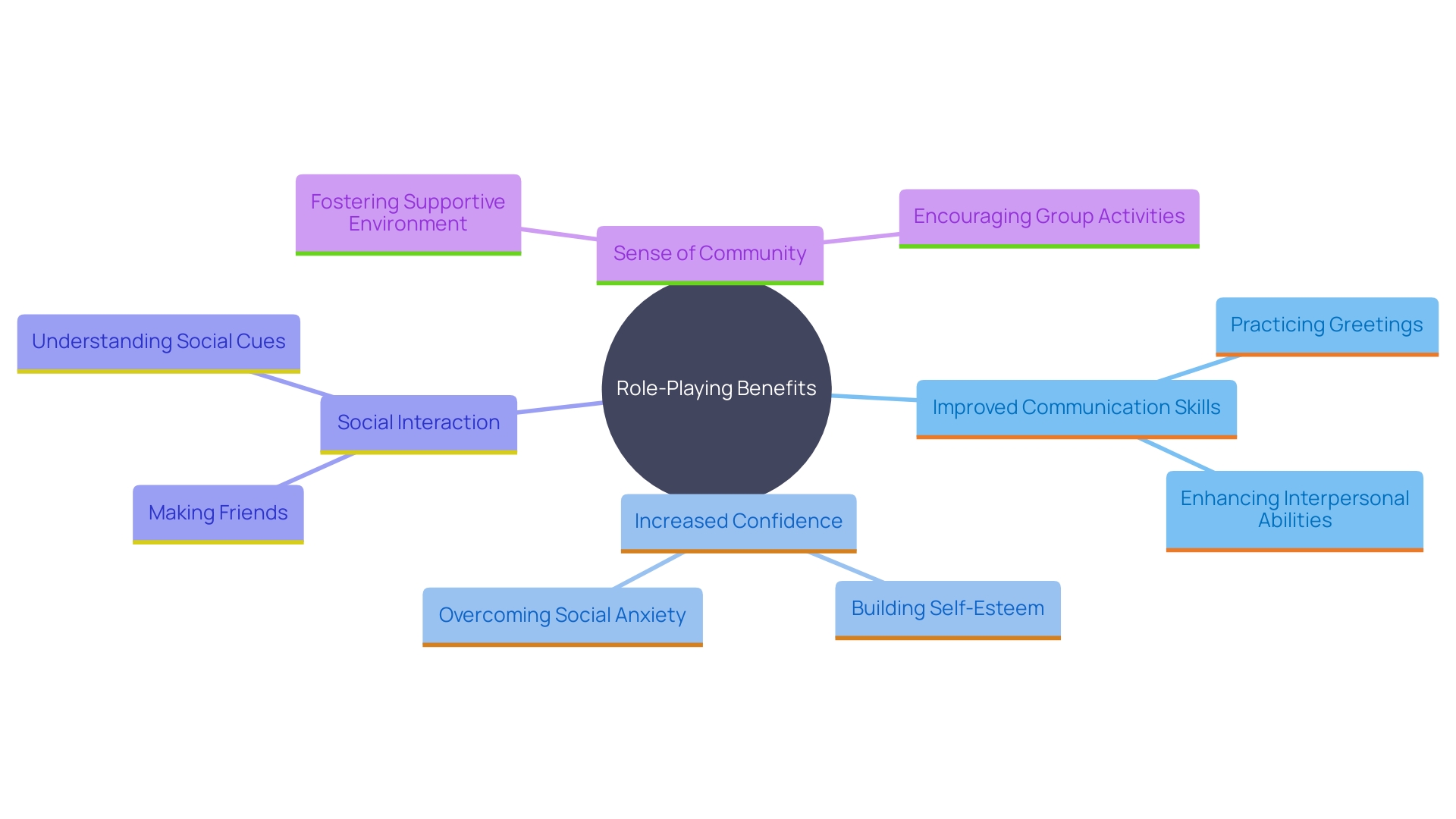
Emotion Cards and Emotional Regulation
Emotion cards can be powerful tools for assisting young ones in recognizing and articulating their feelings. By understanding their feelings and those of others, young individuals can improve their emotional regulation and enhance their interpersonal interactions. Research emphasizes the importance of early childhood interventions in promoting social communication and emotional skills. For instance, the “Reading the Mind in the Eyes” test has proven effective in enhancing emotional understanding among young individuals, highlighting the significance of accurately interpreting emotions. Research has indicated that young individuals identify fundamental emotions such as happiness, sadness, anger, and fear more readily. This foundational emotional knowledge can be nurtured through interactive methods such as real-world scenarios, virtual avatars, and digital sketches, making emotion recognition more relatable and engaging. Furthermore, incorporating emotion cards with individualized activities, as demonstrated in the EPIC approach, guarantees that the tools are customized to each individual's interests and needs, promoting a stronger bond and enhanced emotional development. This holistic approach not only supports emotional development but also paves the way for improved social interactions and overall well-being.
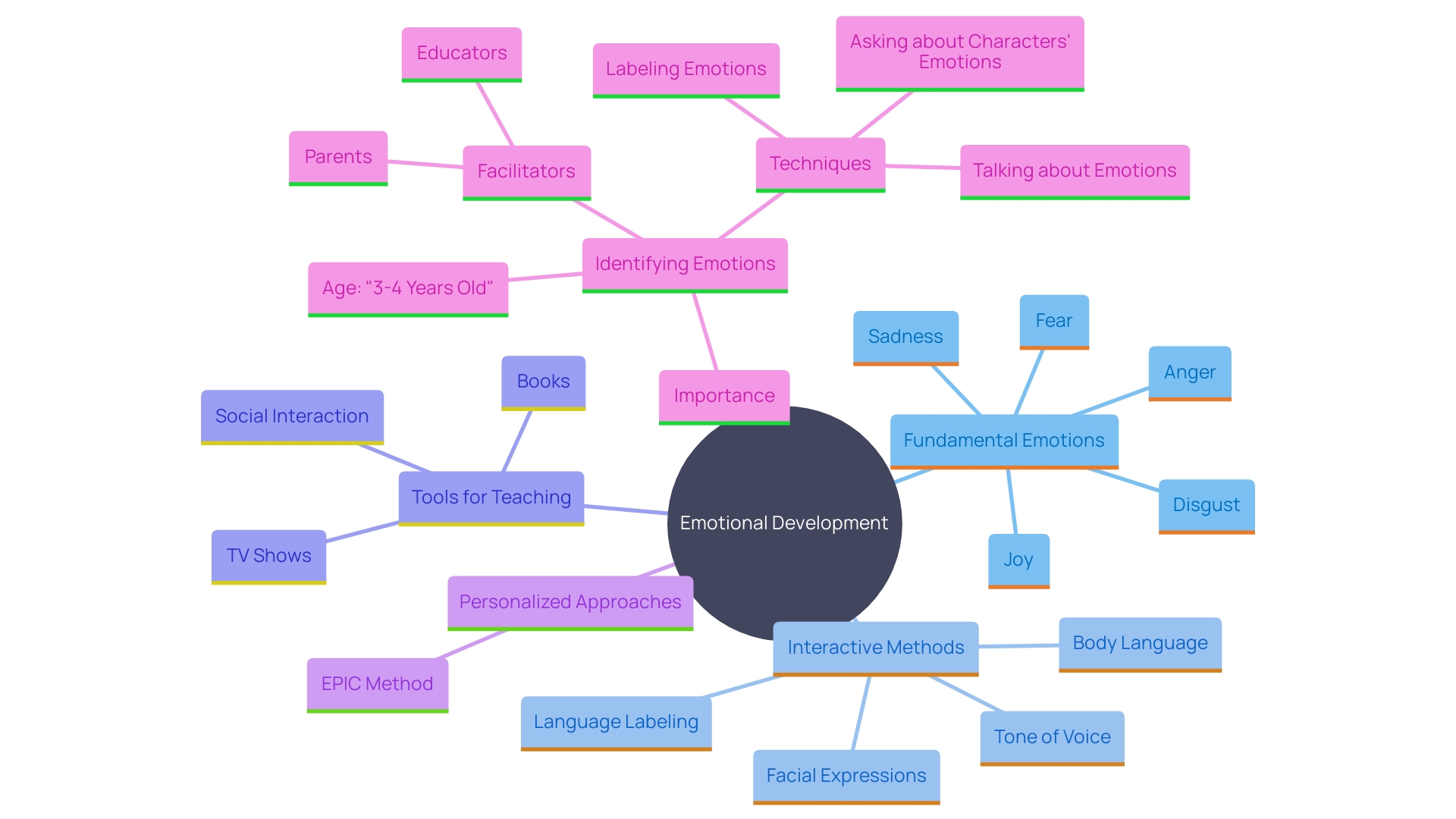
Sensory-Friendly Activities for Social Skills
Engaging in sensory-friendly activities, such as arts and crafts or nature walks, can create meaningful opportunities for socialization and emotional regulation. Based on studies and practical experiences, sensory activities are greatly advantageous for individuals with autism, assisting in handling sensory overload and enabling smoother transitions between various circumstances. For instance, in North Macedonia, inclusive classrooms for autistic individuals highlight the necessity of these activities to support sensory differences.
Arts and crafts, where young individuals can express creativity and collaborate, enhance communication and dexterity. Nature walks, conversely, offer a soothing setting that promotes discovery and engagement with others, which is essential for developing social abilities. This corresponds with discoveries from Northern Ireland, where parents of neurodiverse individuals highlighted the necessity for imaginative, supportive settings to improve their offspring's development.
Experts like Miranda Thain, Artistic Producer at Theatre Hullabaloo, underscore the value of integrating creative play into daily routines. Thain observes that such activities enhance youngsters' capacity to acquire new abilities and promote positive interactions between caregivers and their offspring. These activities not only offer a structured yet adaptable method but also ensure that young individuals feel supported and confident in their abilities.
Additionally, a study from the University of Virginia shows that many nonspeaking autistic individuals have reading and writing abilities, indicating the potential for written communication as a strong resource for interaction and educational involvement. This insight emphasizes the significance of diverse and inclusive activities that address different strengths and preferences, ultimately fostering a sense of belonging and accomplishment for individuals on the spectrum.
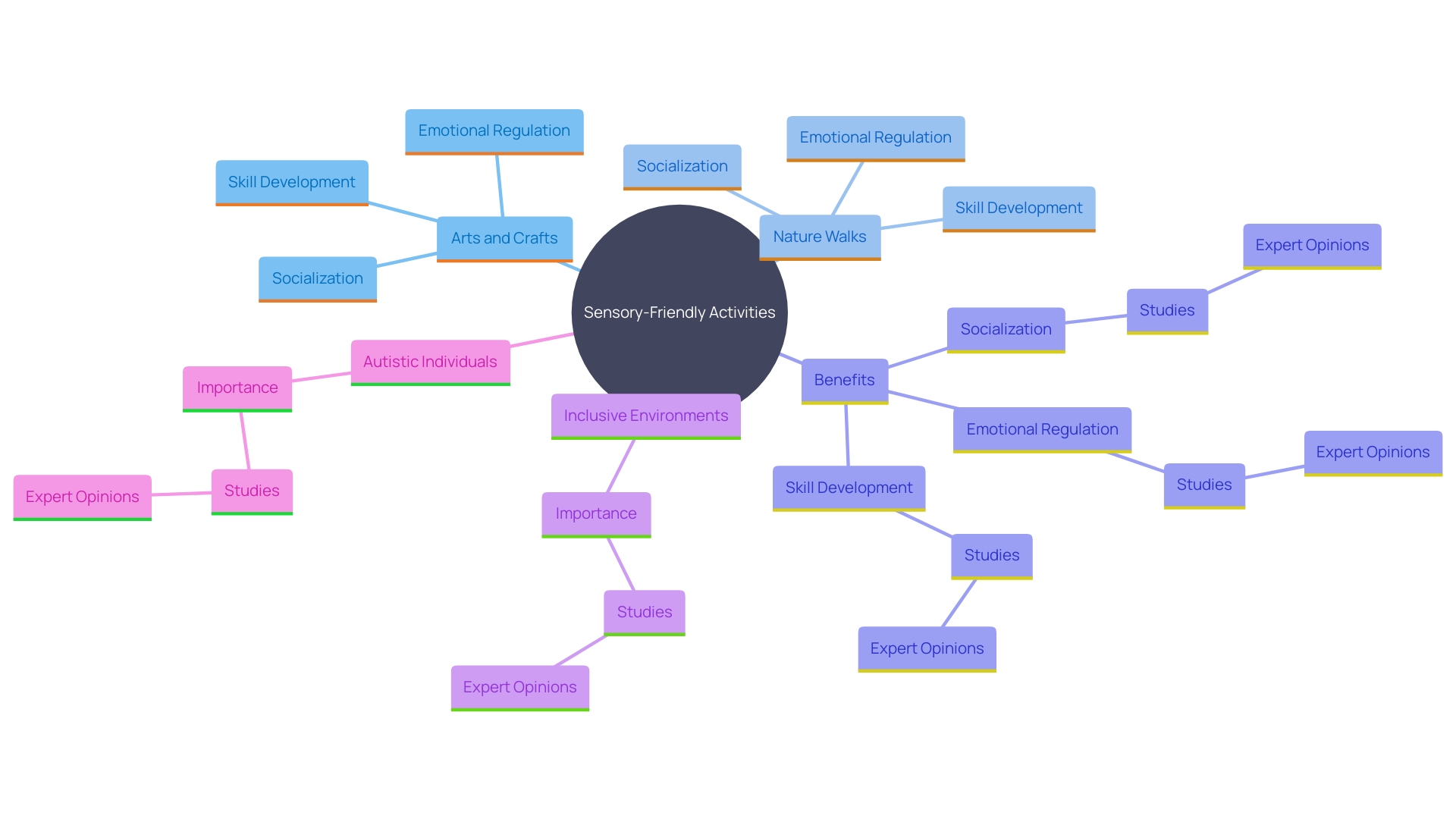
Collaborative Play and Sharing
Participating in joint activities, like constructing projects or participating in group challenges, greatly improves the social abilities of individuals on the autism spectrum. For instance, when constructing a tower of blocks, one participant might handle rectangular blocks while another manages triangular ones, necessitating communication and cooperation. This setup not only encourages sharing but also fosters a sense of community as young individuals learn to navigate and resolve conflicts together. Furthermore, significant teamwork can be attained via storytelling, linking the activity to real-life situations, which makes the experience more relatable and engaging for the young participants. It's crucial to provide access to materials in a way that supports unique roles for each individual, promoting interaction and the exchange of ideas. By doing this, young individuals cultivate negotiation abilities and learn to value diverse viewpoints, ultimately fostering a more inclusive and supportive atmosphere for everyone.
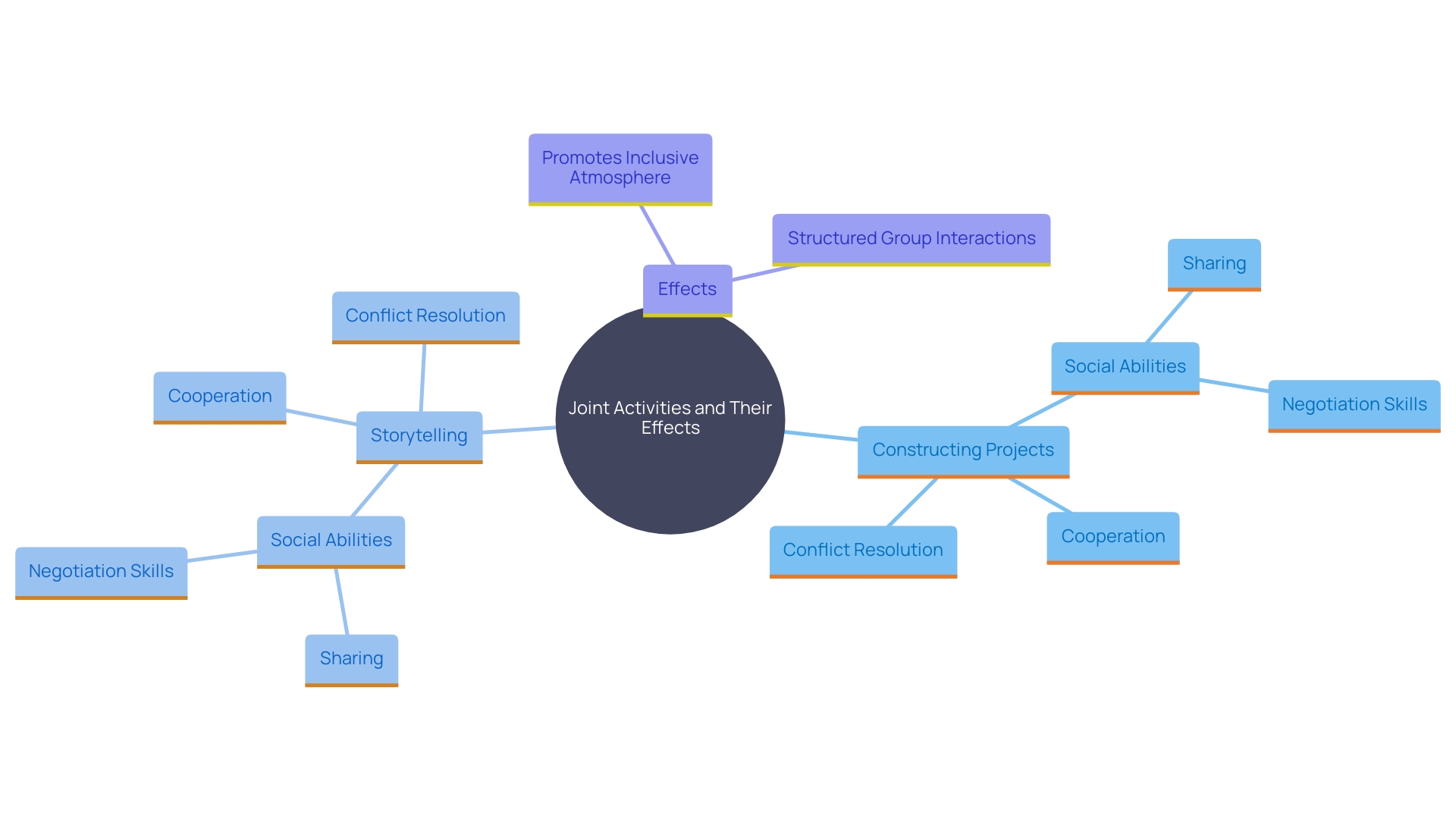
Video Modeling for Social Learning
Video modeling is recognized as an effective method for instructing interaction skills to youngsters with autism. By watching peers participate in suitable interpersonal behaviors, young ones can learn to imitate these exchanges in their everyday lives, making progress towards enhanced communication. Research from the University of Geneva suggests that autistic children develop unique attentional preferences, often focusing on non-social stimuli like textures or geometric shapes instead of interpersonal elements such as faces. This divergence in attentional development highlights the need for early interventions that improve interpersonal attention.
Dr. Hannah Schertz, a specialist in early intervention, highlights the significance of directing parents to aid interpersonal interactions. She clarifies that "the intervention focuses on interpersonal interactions since it is the central difficulty associated with autism, and it’s crucial to tackle issues promptly." Timely and personalized assistance can aid in aligning the developmental paths of autistic youths more closely with their neurotypical counterparts, promoting improved interpersonal integration and interaction abilities.
Studies show that early childhood interventions, particularly those focused on naturalistic developmental behavioral approaches, significantly improve core challenges associated with autism. These interventions not only improve interpersonal communication but also offer a structured framework for youngsters to practice and internalize behavioral norms. For instance, eye-tracking techniques have revealed that targeted behavioral interventions can positively influence the social attention of young individuals on the autism spectrum, paving the way for more effective support strategies.
Furthermore, innovative methods such as using AI to analyze retinal images offer promising avenues for early diagnosis and tailored intervention plans. Such advancements highlight the evolving landscape of autism support, aiming to provide young individuals with the tools they need to thrive socially and emotionally.
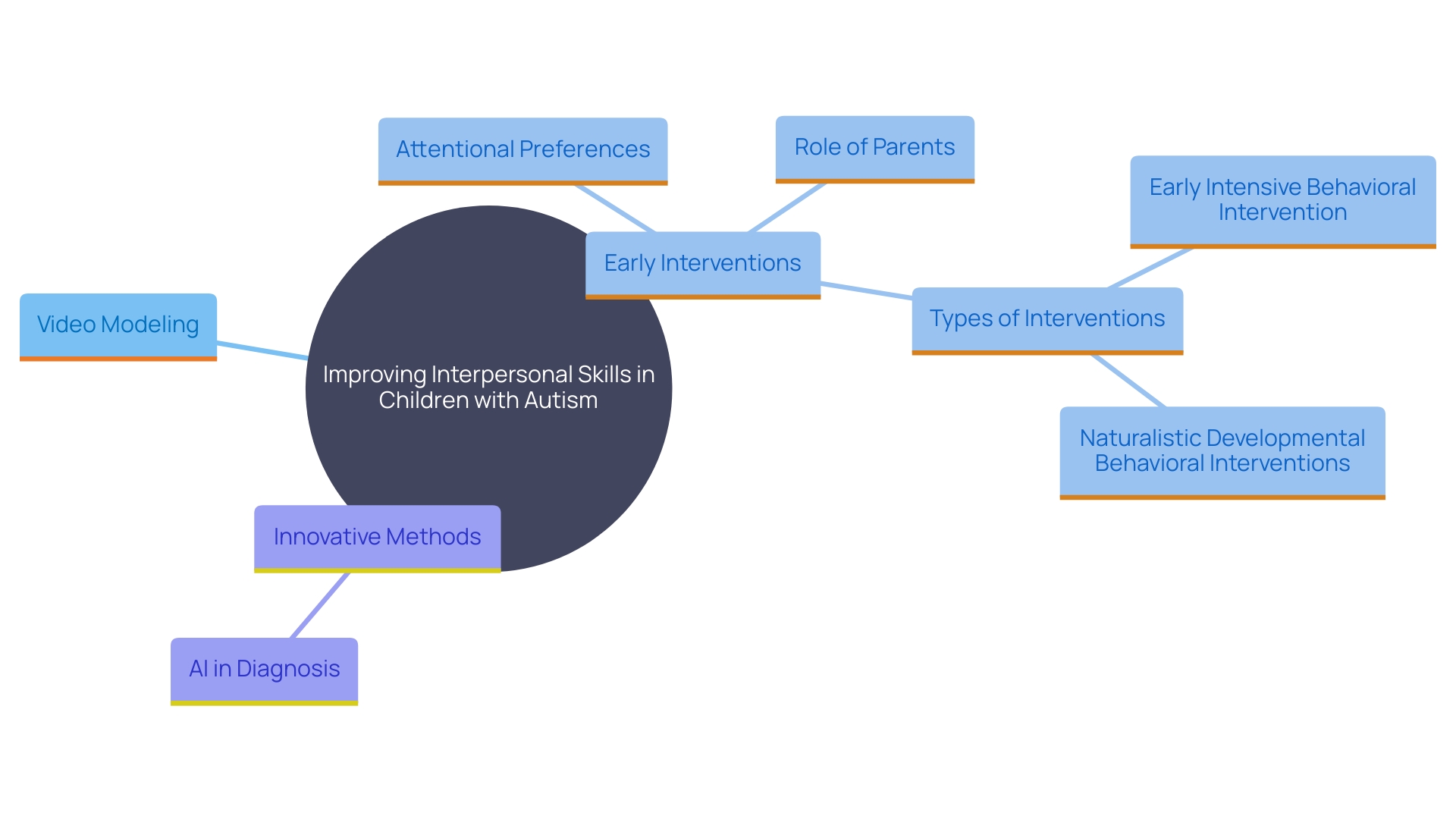
Digital Games for Social Skills Development
Interactive digital games that emphasize teamwork and communication offer substantial benefits. Research conducted by UNICEF Innocenti and various universities highlights that these games can significantly enhance the well-being of young individuals by fostering a sense of control, freedom of choice, mastery, and achievement. For instance, games that require players to strategize together promote social engagement in an enjoyable and low-pressure environment, helping young individuals feel connected and manage their social interactions effectively.
A study involving 69 participants aged seven to 13 in Australia analyzed their heart rate, eye tracking, facial expressions, and galvanic skin responses while playing these games. The findings revealed that digital games could assist young people in experiencing and regulating emotions, exploring different possibilities, and expressing various facets of themselves. This corresponds with a report derived from 240 in-home visits to 50 families in various nations, which highlights the positive effect of digital play on the well-being of young individuals.
Moreover, a study by the University of Oxford found that 72% of players experienced an uplift in mood during gaming sessions, supporting the idea that short-term gaming can be beneficial for mood-related interventions. These insights indicate that well-designed digital games can provide young individuals with valuable opportunities for learning and interaction, ultimately promoting a sense of belonging and achievement.
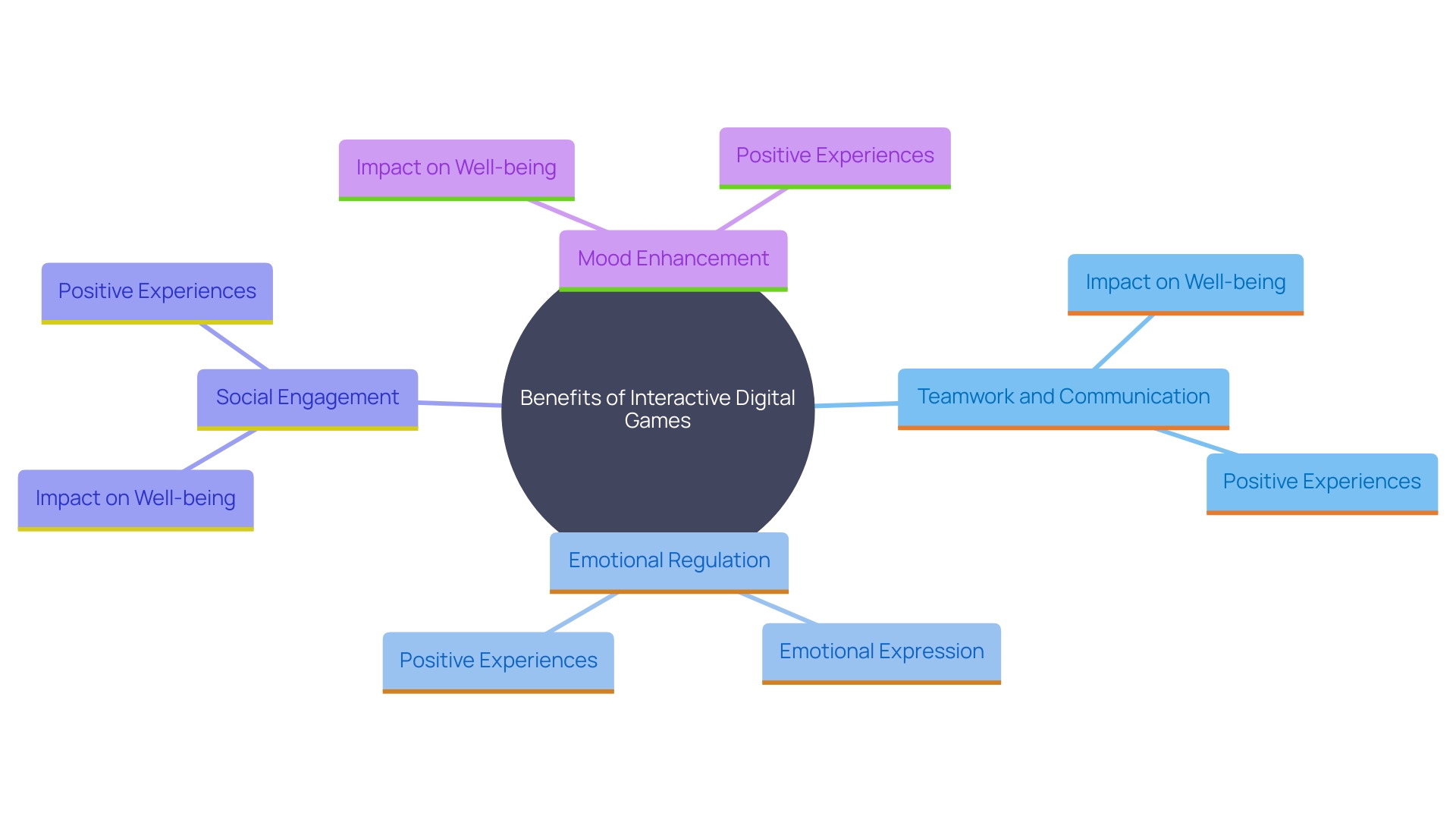
Practicing Conversational Skills and Turn-Taking
Creating small group discussions or conversation circles is an effective method to assist young individuals in practicing their conversational skills. This approach emphasizes turn-taking and active listening, which are essential for meaningful engagement. According to research, embedding conversations in everyday routines can significantly enhance language development in young individuals. By aiming for at least 40 conversational turns per hour, young learners can experience optimal language, cognitive, and interpersonal growth.
One successful framework to consider is the 'Strive-for-Five' approach, which encourages extending conversations beyond the typical three turns to five, fostering deeper language skills. This method was highlighted by educators David Dickinson and Ann B. Morse and further adapted by researchers Sonia Q. Cabell and Tricia A. Zucker. The aim is to stimulate young minds and promote the use of more advanced language through open-ended inquiries and considerate follow-ups.
Additionally, conversations with attentive adults provide substantial benefits across all areas of children's well-being. These interactions are more than just finding out about their day; they are opportunities for strategic and purposeful engagement that can enhance literacy and language development.
Evidence supports that developmental interventions enhance interpersonal exchanges, particularly in interactions with caregivers. These naturalistic and behavioral interventions are essential for tackling fundamental issues related to autism, especially interpersonal interaction difficulties.
For example, Dr. Hannah Schertz's study at Indiana University Bloomington highlights the significance of assisting parents in utilizing mediated learning techniques to enhance interpersonal communication in young individuals with autism. Her studies underline the significance of early intervention, as early signs of autism often relate to later language competency.
In summary, establishing organized dialogue settings and applying established frameworks like 'Strive-for-Five' can greatly enhance young people's conversational skills and overall growth.
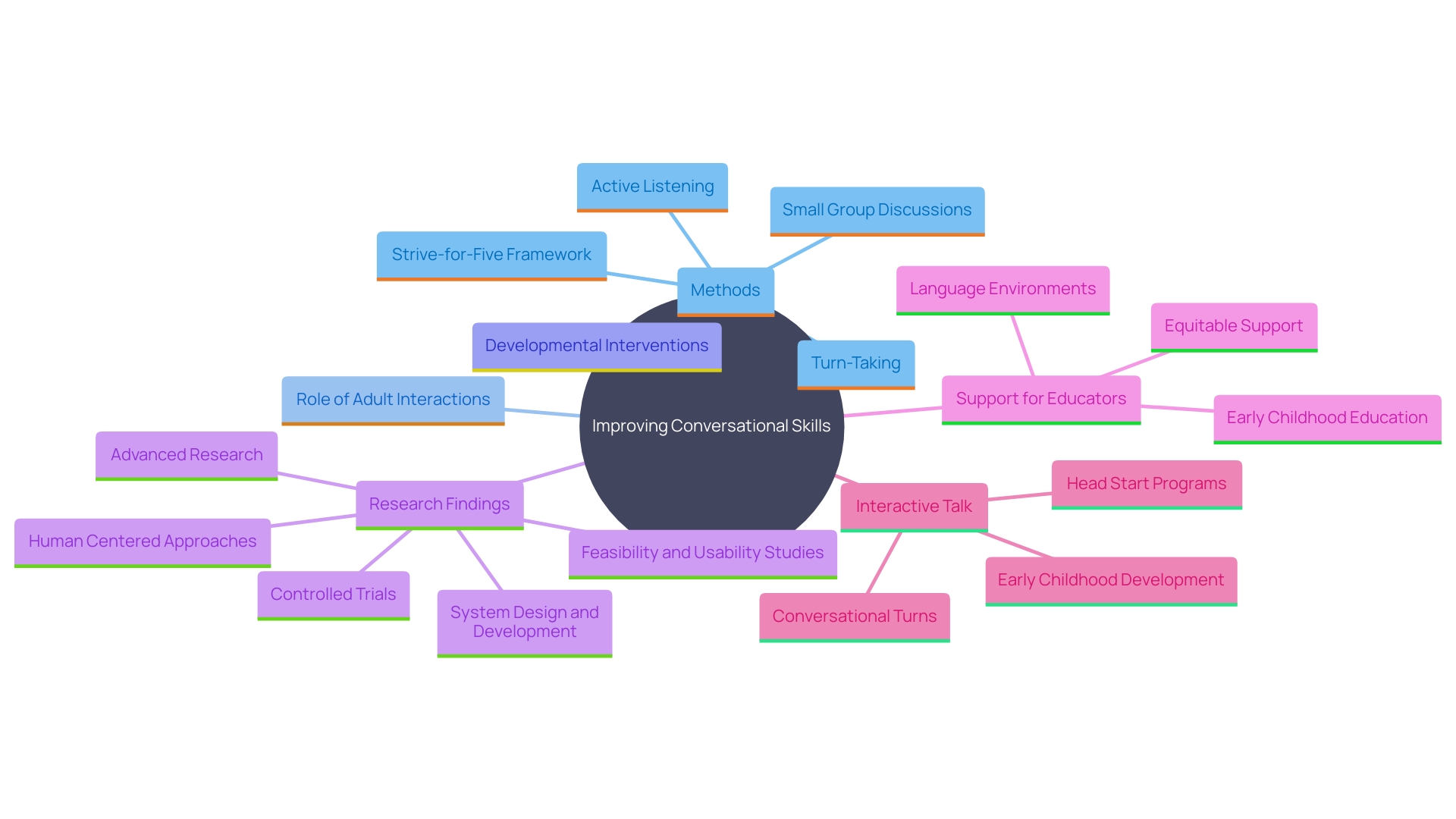
Integrating Interests for Enhanced Engagement
Integrating a young person's interests into communal activities can greatly improve their involvement and participation. By incorporating a beloved character or pastime, young individuals are more likely to be inspired and engaged in interpersonal practice, resulting in deeper and more significant interactions. Study by Dr. Hannah Schertz emphasizes the significance of early assistance that tackles fundamental interaction difficulties in young individuals with autism. Through parental guidance and structured educational methods, young individuals can cultivate shared focus and other social interaction abilities in a nurturing setting that honors their distinct interests and requirements. This approach has been shown to be feasible and effective, providing children with a strong foundation for verbal communication and fostering a sense of belonging and achievement.
Conclusion
Creating an environment that nurtures social and emotional development for children on the autism spectrum is paramount. The strategies outlined—structured play, visual supports, role-playing, emotion cards, sensory-friendly activities, collaborative play, video modeling, digital games, conversational practice, and integrating personal interests—demonstrate the multifaceted approach needed to empower children and their caregivers. Each method not only enhances specific skills but also fosters a sense of belonging and achievement, essential for holistic growth.
These evidence-based techniques highlight the importance of early intervention and tailored support in addressing the unique challenges faced by autistic children. By engaging in structured activities that promote social interaction, emotional understanding, and effective communication, parents and caregivers can significantly impact their children's developmental trajectories. The integration of personal interests into social practices further ensures that children remain motivated and engaged, making learning a more enriching experience.
Ultimately, the goal is to equip children with the tools they need to navigate social landscapes confidently. By implementing these strategies, caregivers can create meaningful opportunities for their children to thrive, paving the way for improved social skills, emotional regulation, and a deeper connection with their peers. This commitment to fostering an inclusive and supportive environment not only enhances children's well-being but also empowers families to advocate for their children’s needs and ensure their success in various social contexts.




